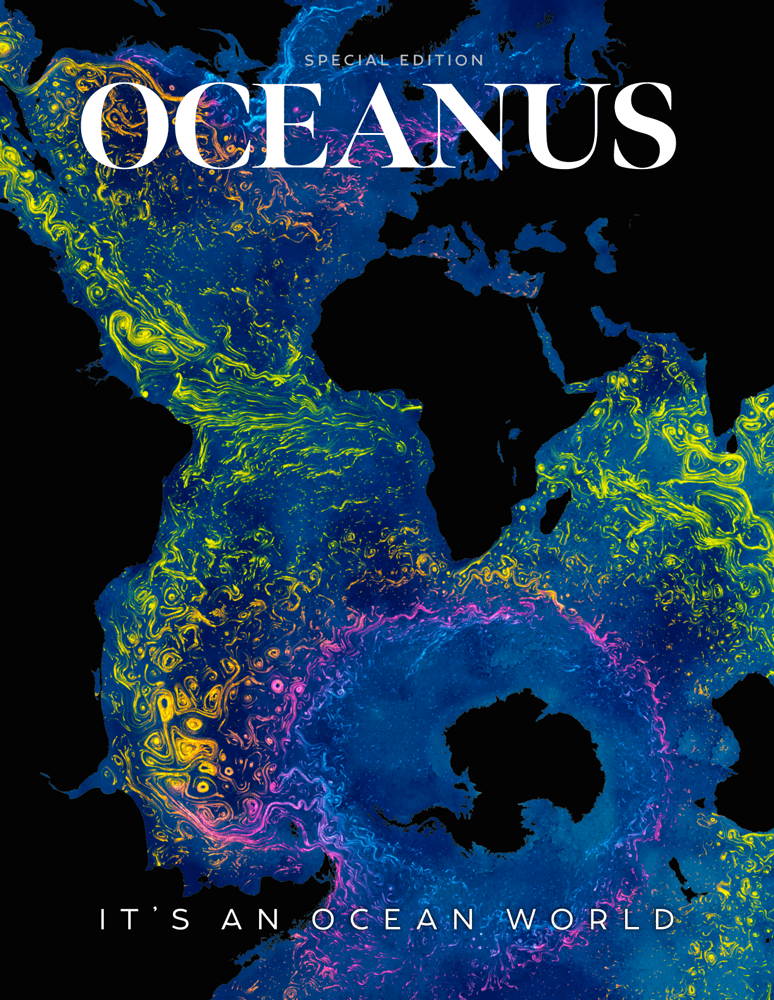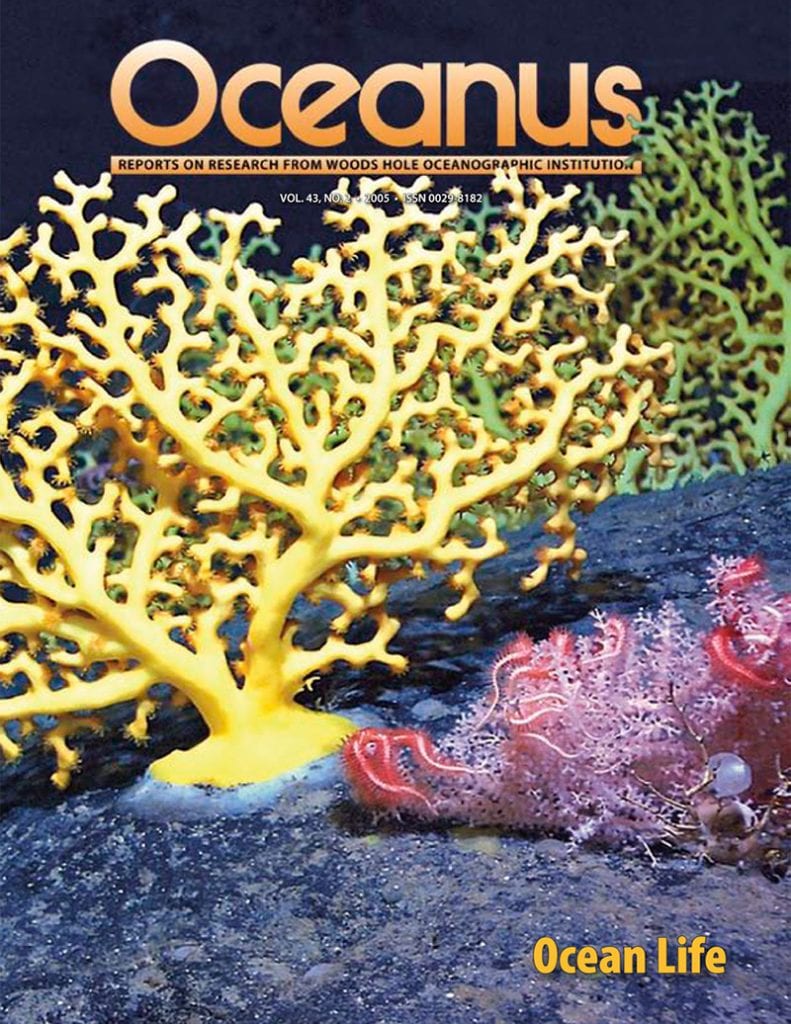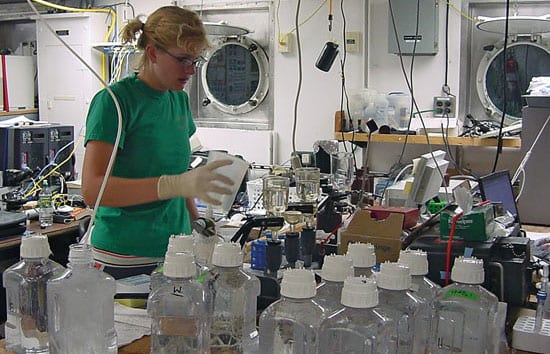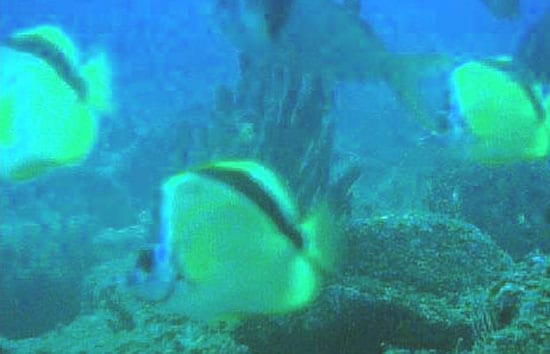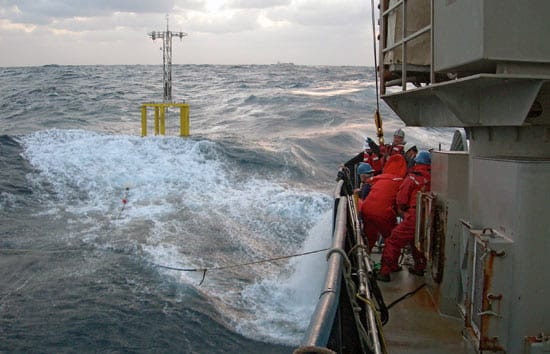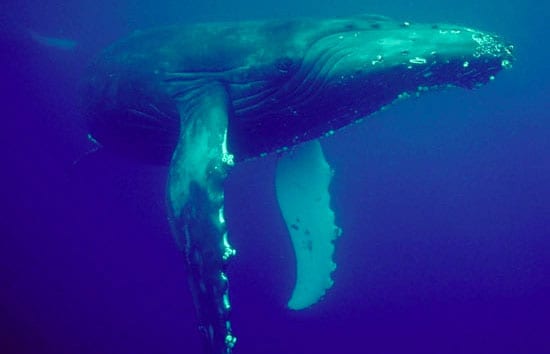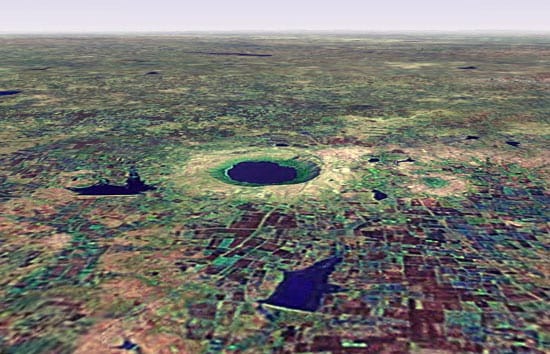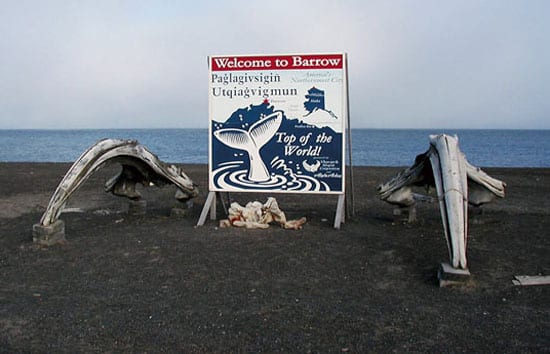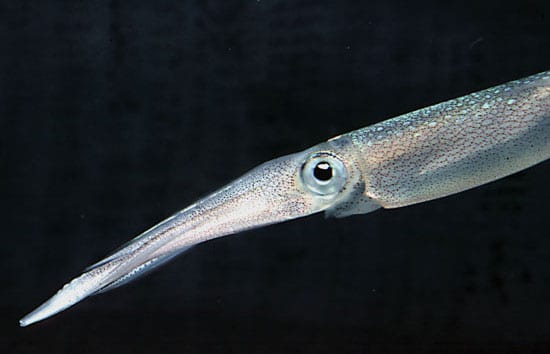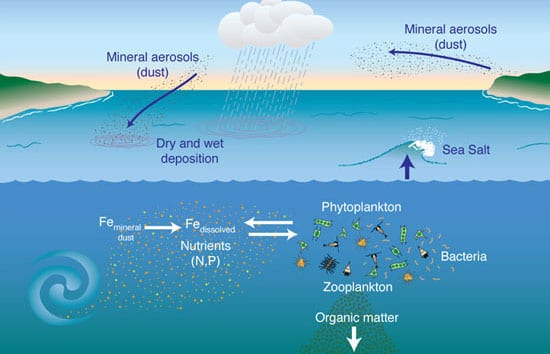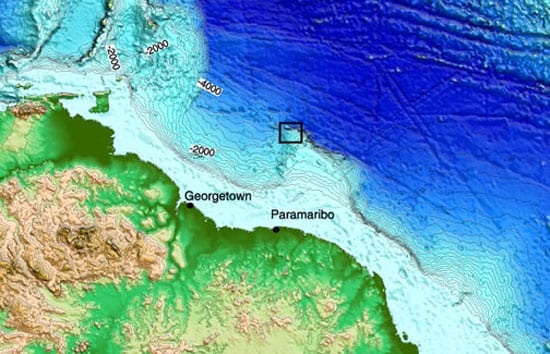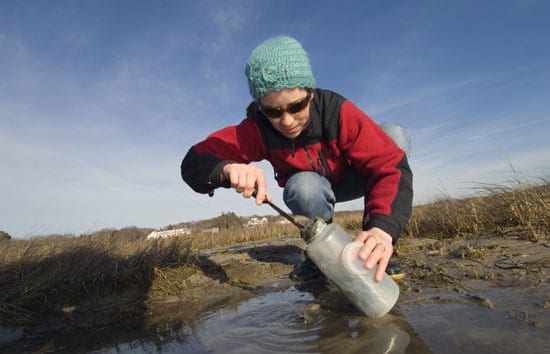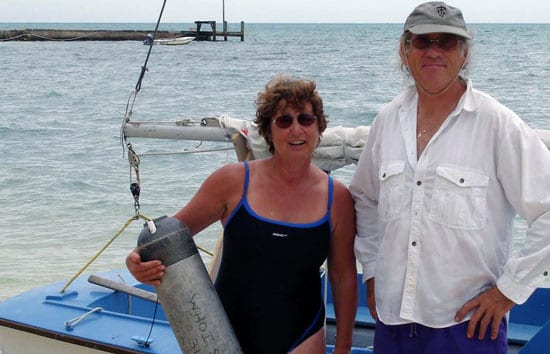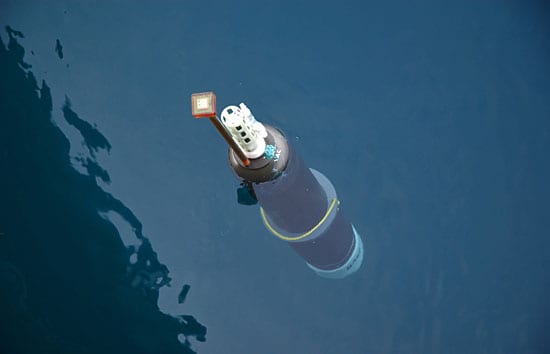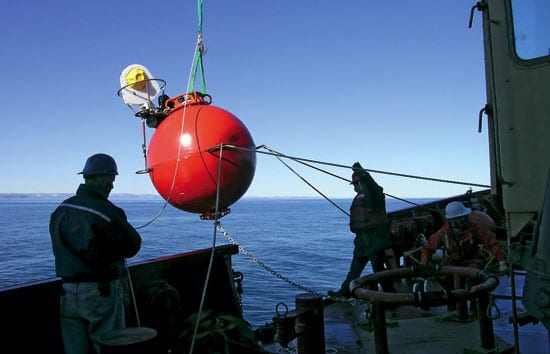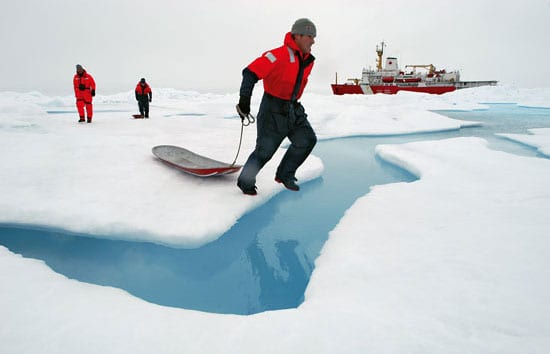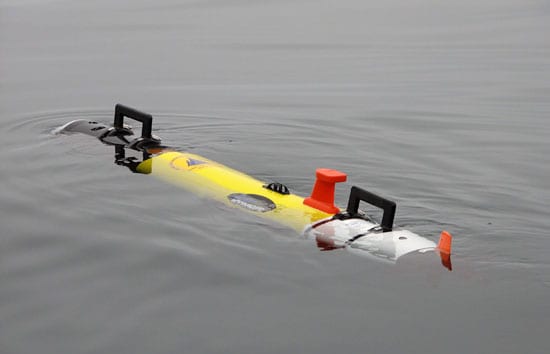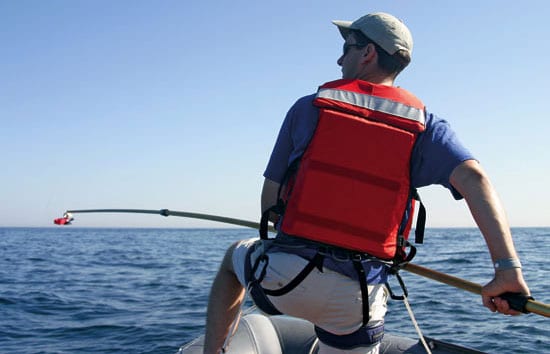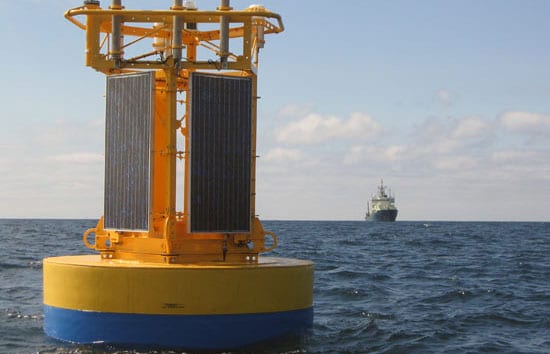Oceanus Online Archive
The Oceans Have Their Own Weather Systems
From June to September 2005, oceanographer Dennis McGillicuddy and a team of more than 20 scientists from WHOI and five other marine science labs tracked an eddy named A4. It was the oceanic equivalent of a hurricane?a huge mass of water, spinning like a whirlpool, moving through the ocean for months, stretching across tens to hundreds of kilometers, stirring up a vortex of water and material from the depths to the surface. But unlike destructive hurricanes, eddies are productive.
Read MoreLive From the Tropics, It’s an Ocean Network
With a click of his computer mouse, Scott Gallager was swimming with the fishes off the west coast of Panama. Virtual reality? Well, the fish, corals, and currents are real;…
Read MoreThe Hunt for 18° Water
In 1959, oceanographer Valentine Worthington gave a name and an identity to a long-observed but poorly understood phenomenon of the North Atlantic. Valentine described how the interior of the Sargasso Sea contained distinct parcels of water with remarkably constant salinity, density, and temperature?roughly 18? Celsius. Decades later, his successors from Woods Hole Oceanographic Institution and eight other institutions have launched a far-reaching program to examine the formation and evolution of Worthington?s famous water and how it might influence North Atlantic climate.
Read MoreCaught in the Middle of the Marine Mammal Protection Act
In the past few years, several research projects have been halted because of conflicting interpretations of the Marine Mammal Protection Act. Energy, shipping, and naval interests claim the MMPA hampers their ability to work in the sea. Environmentalists and animal rights want the act strictly enforced. In between are scientists.
Read MoreOne of the Greatest Volcanic Shows on Earth
About 50,000 years ago, a huge meteorite smacked into our planet, gouging a hole more than a mile wide and 790 feet deep in India. Of the roughly 150 known…
Read MoreWhat Brings the Food that Brings the Whales?
Watching the gray, pitching ocean from the beach in Barrow, Alaska, Carin Ashjian, a biologist at Woods Hole Oceanographic Institution (WHOI), wonders if the seas are too rough for the…
Read MoreNew Sonar Method Offers Window into Squid Nurseries
Squid fishing has increased substantially in the past decade, with no way to assess the continuing viability of the stock?until now.
Read MoreDust Busters for the Oceans
Like most living things, microscopic marine plants need iron and other minerals to live and grow. On land, soil provides a ubiquitous source of minerals, but how do essential nutrients…
Read MoreAnalyzing Ancient Sediments at Warp Speed
Like a toy out of a science fiction story, the X-ray fluorescence core scanner reveals intimate details of the composition of ancient mud and sediment–which can contain a variety of clues about past climate and environmental conditions on Earth–without breaking the surface. In a matter of hours, the XRF simultaneously captures digital photographs and X-ray images of every millimeter of a core sample, while detecting the presence of any of 80 chemical elements.
Read MoreSmall Island. Big Ocean.
This week, more than 200 WHOI scientists and graduate students will brave the balmy trade winds, drooping palm trees, and misdirected laser pointers to present research in Honolulu. Reporters Hugh…
Read MoreAn Ocean Warmer Than a Hot Tub
Scientists have found evidence that tropical Atlantic Ocean temperatures may have once reached 107°F (42°C)—about 25°F (14°C) higher than today. The surprisingly high ocean temperatures occurred millions of years ago…
Read MoreGraduate Student Discovers an Unusual New Species
Sheri Simmons gets into the rugged wilderness as often as she can, backpacking in Newfoundland, the Sierras, the Adirondacks, and Alaska—where she once encountered a grizzly bear on a trail.…
Read MoreFloat 312, Where Are You?
The ocean is so enormous, even a fleet of 2,338 ocean-monitoring instruments can sail into it and go largely unnoticed. That’s what floats 312 and 393 were doing until something…
Read MoreUnder-ice Floats Offer a ‘Breakthrough’
The Arctic Ocean, home to fierce winds, punishing temperatures, and thick sea ice, is no place for wimpy people?or machines. So when WHOI physical oceanographers Peter Winsor and Breck Owens set out to explore the largely unknown currents beneath the polar sea ice, they had to design an instrument with true grit. (Fifth in a five-part series.)
Read MoreA Sentry at the Atlantic Gateway
Here’s an easy recipe to change Earth’s climate: Just add more fresh water to the North Atlantic Ocean. In this oceanic part of the world lies a critical—and sensitive—component of…
Read MoreThe Flywheel of the Arctic Climate Engine
A key component of the Arctic climate clockworks is the Beaufort Gyre?a bowl of cold, icy, relatively fresh waters north of Alaska that is swept by prevailing winds into a circular swirl larger than the Gulf of Mexico.
Read MoreFlying Blind in the Ice Factory
Al Plueddemann wants to push the envelope and fly a robotic vehicle into the wild blue under the polar ice cap. North of Alaska lies a key region for understanding…
Read MoreIs Global Warming Changing the Arctic?
In the Arctic, the air, sea ice, and underlying ocean all interact in a delicately balanced system. Four ambitious Arctic projects are pulling back the icy veil that shrouds our understanding of the Arctic Ocean?s role in our climate system. (First of a five-part series.)
Read MoreTo Find Whales, Follow Their Food
The average adult right whale consumes about a ton of food a day, eating billions of tiny crustaceans called copepods that are packed with protein and calorie-rich oils. “To whales,…
Read MoreDiving into the Right Whale Gene Pool
Like forensic detectives, a multi-institutional team of scientists has followed a thread of DNA from the highly endangered right whale population across the oceans and back through generations.
Read MoreDoing the Right Thing for the Right Whale
The situation is urgent: Seventy years after whaling was banned, the North Atlantic right whale population has not recovered. Only 300 to 350 remain, and the species is headed toward…
Read MoreGoing Wireless in the Deep Blue
How do you get long-term ocean measurements from any spot on the globe, with day by day feedback and low costs? If you are Dan Frye of the WHOI Advanced Engineering Laboratory, you take an old oceanographic concept?the moored buoy?and bring it into the 21st century with wireless technology.
Read MoreInstitution Receives Surprise Bequest
The latest news from around the Institution includes: the second-largest donation in WHOI history; training and awards for mid-career journalists; a new fund for graduate student training in seagoing skills; and a successful program for undergraduates.
Read MoreWHOI Opens New Research Facilities
For the first time in 15 years, the Woods Hole Oceanographic Institution has added significant office and laboratory space to its Quissett Campus. This fall, scientists, technical staff, and students started moving into more than 67,000 square feet of new space, a 25 percent increase in the Institution?s scientific facilities.
Read More